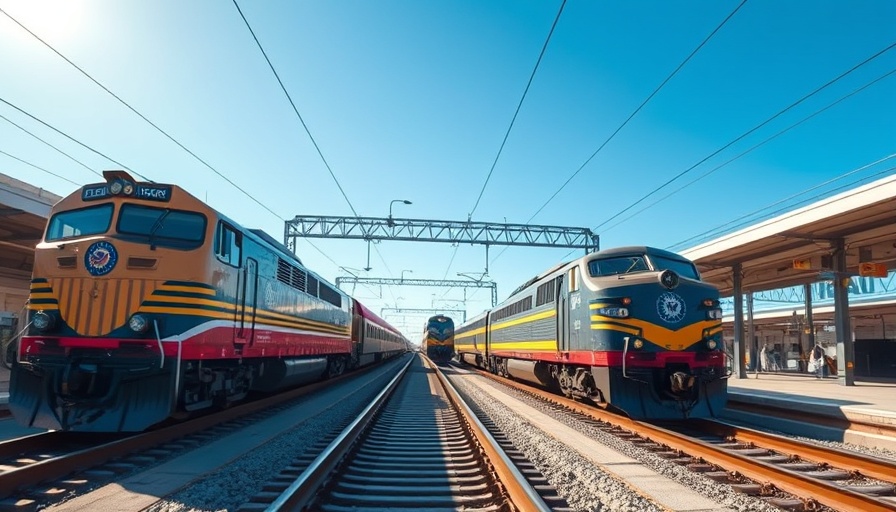
The Union Pacific and Norfolk Southern Merger: An Overview
The proposed merger between Union Pacific and Norfolk Southern is creating waves within the transportation industry. This $85 billion deal aims to establish the first coast-to-coast freight rail operator in the United States, fundamentally changing how goods are transported across the nation. However, it has prompted serious concerns from various stakeholders, particularly freight customers and labor unions, who fear that this massive consolidation could lead to price hikes and diminished service quality.
What’s at Stake for Rail Customers?
Seven associations representing U.S. railroad customers have raised alarms, advocating for regulators to block or impose heavy restrictions on this merger. Their primary concern is that the merger would enable the combined entity to monopolize the market, allowing it to significantly increase fees and diminish service standards. The fear is that a monopoly could tilt the balance of power heavily in favor of the service provider, ultimately harming the customers reliant on these rail services for their supply chains.
Regulatory Attention: The Role of the Surface Transportation Board
The Surface Transportation Board (STB) is poised to play a crucial role in reviewing this merger. Given the complexities and significant implications of the deal, the STB will be meticulously analyzing both potential benefits and drawbacks. As illustrated by Senate Democratic leader Chuck Schumer's remarks describing the merger as a "hostile takeover of America’s infrastructure," the stakes are high, and the regulatory scrutiny will be intense.
Labor Unions: A Strong Opposition
Labor unions, including the transportation division of the International Association of Sheet Metal, Air, Rail and Transportation Workers (SMART), are vocal opponents of the merger. They argue that such consolidations threaten existing jobs and may disrupt service reliability, putting additional stress on an already complex rail system. There is a strong narrative that increasing merger activities not only compromise jobs but may also create a less competitive landscape that could stifle innovation and responsiveness in the market.
Financial Insights and the Potential for Growth
Despite the criticisms, Union Pacific and Norfolk Southern argue that this merger would yield significant financial advantages, including an anticipated $2.75 billion in annual synergies. Proponents see these figures as evidence that the merger could lead to more efficient operations and potentially better service. The combined enterprise value of the two railroads is projected to be around $250 billion, demonstrating the scale at which these companies are operating. For business owners relying on rail for logistics, the question remains: could this efficiency translate to operational savings that might benefit them in the long run?
Future Predictions: A Transformative Shift in Rail Transportation?
This merger stands as a transformative moment for the U.S. rail transport landscape. Will it pave the way for modernizing rail infrastructure and operations? There’s a potential for technological advancements and efficiency improvements that could redefine freight transportation. Conversely, if concerns regarding monopolistic behaviors are not addressed adequately, we may witness a return to reliance on road transportation, with its own set of environmental and logistical challenges.
Actionable Insights for Business Owners
For consultants, coaches, and small business owners, understanding the implications of this merger can be vital. Those in sectors that depend heavily on rail transport should actively engage with representatives from both rail companies to discuss concerns and seek assurances regarding service standards and pricing. Being proactive can help businesses' logistics departments prepare for any changes arising from this monumental deal.
Conclusion
The Union Pacific-Norfolk Southern merger represents more than just a business transaction; it encapsulates broader themes of monopoly power, labor rights, and the future of logistics in America. As stakeholders await decisions from regulators, the landscape of freight transportation could either see a renaissance or enter a perilous phase of consolidation. It's a critical time for all parties involved to keep attentive and engaged, ensuring that their voices are heard in this significant decision-making process.
To stay informed on developments regarding this merger and its impacts on your business, make sure to follow related news and analyses. Understanding these shifts is crucial for adaptation in a constantly evolving market.
 Add Row
Add Row  Add
Add 




Write A Comment